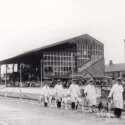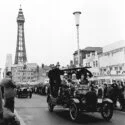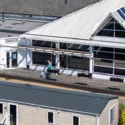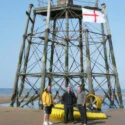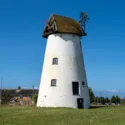Lytham Mill, constructed in 1805 by the Squire of Lytham on a plot of land known as Lytham Marsh, was initially leased to Mr. Richard Cookson. Although the mill itself was relatively new, some of its machinery was much older, likely repurposed from other disused mills in the region. Notably, the central shaft, a crucial component for transmitting power to the mill’s various parts, was marked with a sign stating, “this shaft is of Baltic Oak and it has done its work for 150 years.” When the mill was first built, it lacked the surrounding plinth that is present today. Evidence of this can be seen in the bricked-up windows inside the basement shell. The plinth, which was likely added about ten years later, was designed to protect people and animals from coming too close to the mill’s sails. It also provided a platform for the miller to adjust the sailcloths and the cap of the mill, though it was humorously described as making the mill resemble “a candle in a saucer.”
Lytham Mill was a bustling hub of activity, serving a large area. Farmers would transport their grain by pony and cart along a narrow track from Mythop Road, depositing sacks of wheat and oats for milling. The grain would later be collected as flour, meal, or bran. However, by 1840, the mill began to be viewed as an industrial nuisance by the residents of the newly built Beach Houses. The mill’s operations produced disruptive noises from clanking chains and creaking sails, as well as smoke from the drying-kiln that was situated alongside the mill. The drying-kiln was a vital part of the milling process, as grain needed to be dry before it could be ground into flour. The kiln featured a furnace fueled by peat or wood, with a floor made of 12-inch square tiles, each perforated with small holes. Grain was spread across this floor, and the warm air circulating through the tiles dried it sufficiently for milling.
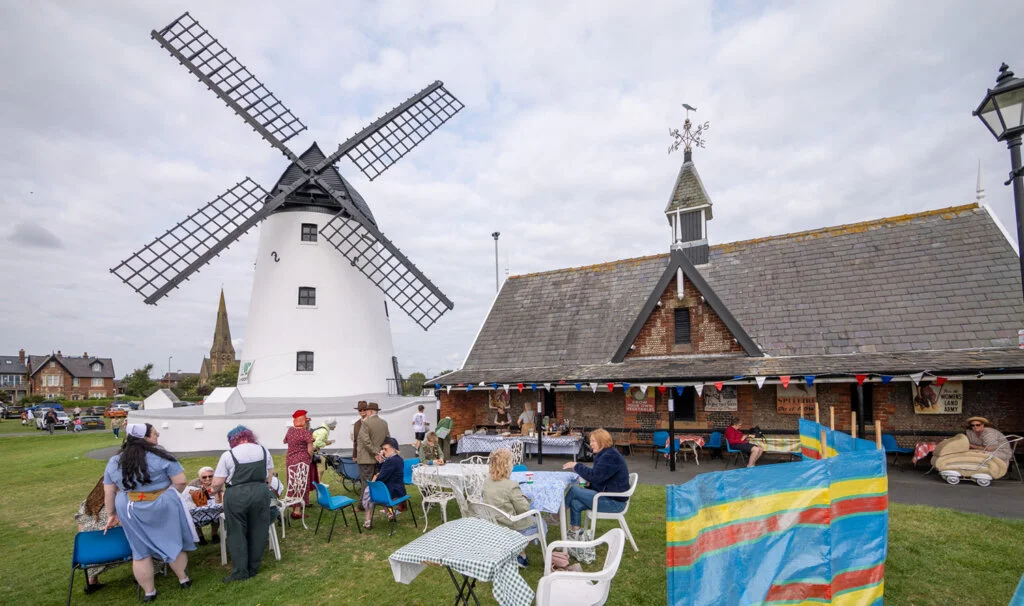
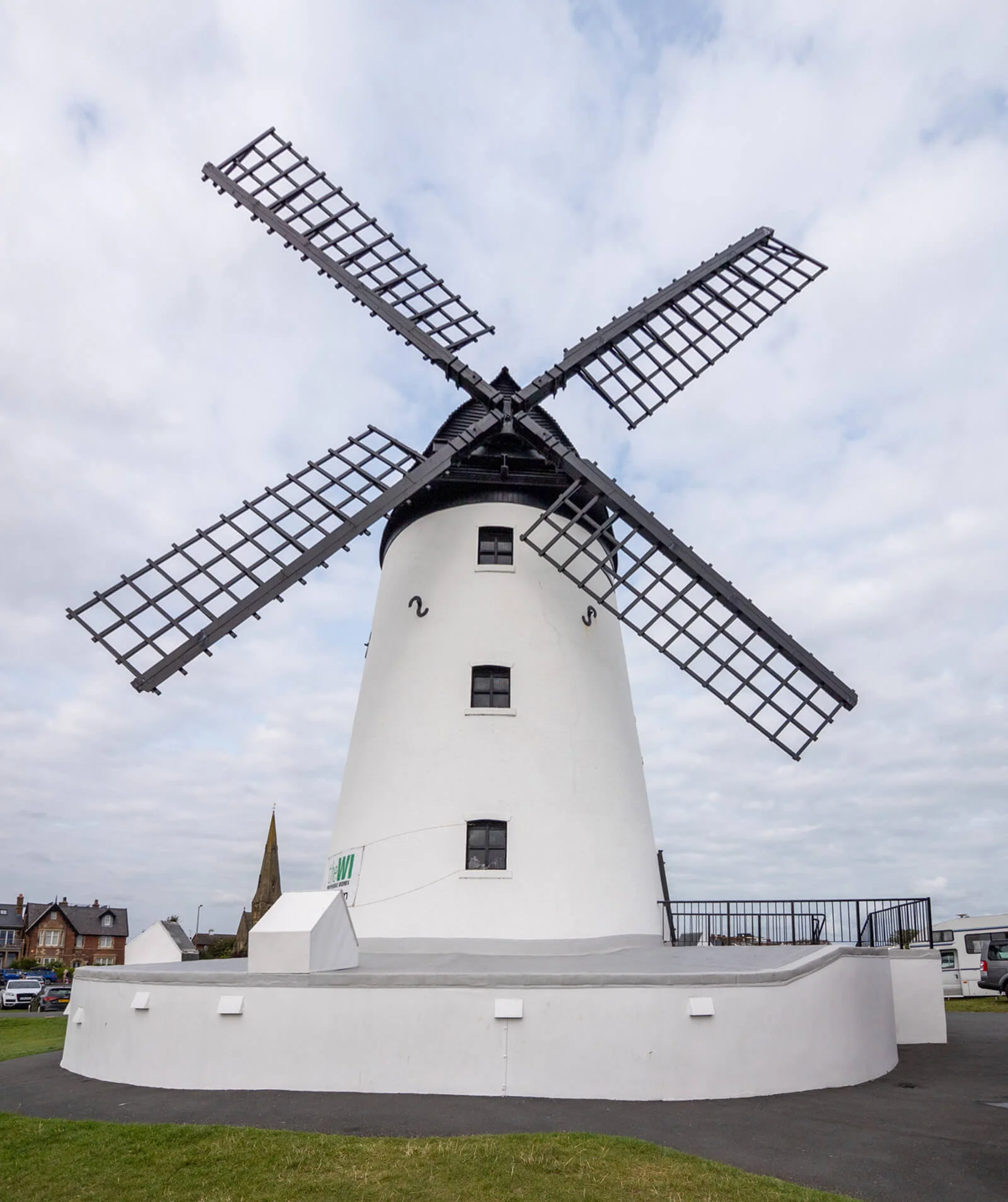
Featured Image © Deeper Blue Marketing & Design Ltd
Text source: from theirwebsite
Images by © Deeper Blue Marketing & Design Ltd







